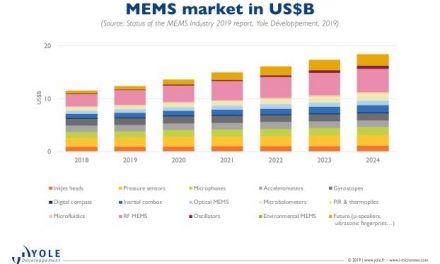Manufacturers find ways to become more financially efficient
By Thore Vestergaard, MD of Commercial Cards, Allstar Business Solutions
A year into the COVID pandemic, and with the UK formally leaving the European Union (EU), businesses in the manufacturing industry have had to face an unprecedented set of challenges. While there are further uncertainties over how the economy will perform as lockdown restrictions end, there are ways for manufacturers to look again at the robustness of their cashflow and working capital.

Thore Vestergaard MD of Commercial Cards at FLEETCOR
In order to take the temperature of UK businesses, Allstar Business Solutions surveyed 500 SME business owners and senior decision makers towards the end of 2020 and found that, as one would expect, many businesses are facing a difficult climate marked by uncertainty, cuts to spending and low cash reserves. Nationwide, 234,000 small businesses had to close by September of 2020, but the picture is changing and I’ll explore the ways in which businesses can keep bottom lines from bottoming out.
The impact of COVID-19
Amongst survey respondents from the manufacturing and utilities sector, 31% reported having to shut down operations because of the pandemic, with 49% spending on making their business COVID-secure. The general downturn in income manifested in companies cutting or reducing pay rises (39%), employee travel (49%), expenses (35%) and worst of all numbers of employees (32%). Only 3% of companies in the manufacturing and utilities sector reporting that they hadn’t cut back anywhere in their business due to the pandemic.
Unsurprisingly, much of the impact of the pandemic came in the early stages, with 56% of respondents in the manufacturing sector reporting that the months when they experienced the most financial pressure were April, May and June of 2020. In these months, adaptations had to be made to workplaces and processes, PPE needed to be purchased and there would have been a period of adjustment, so this makes sense.
Most worrying were the reports of lost business and revenue due to the pandemic- 43% of businesses in the manufacturing sector said that they lost business during the period. 30% said that they had to be more cautious with money and 31% made budget cuts. 49% said that their primary concern was uncertainty about how the pandemic would continue. Perhaps if the survey were conducted again today, when vaccines have begun and a roadmap is in place, this number would be lower.
The importance of cash flow and working capital
For many businesses within the sector, one of the most cited problems was access to cash flow within the last six months. The initial cost of adapting to COVID combined with reduced cash inflow and increased expenses has emptied bank accounts, leaving many businesses struggling to get by from month to month.
In manufacturing, this is a particular problem as there needs to be a constant flow of materials into a manufacturing operation. If this flow is interrupted by an inability to pay then production stops and unless a company can get a loan the business is effectively over, hence why 40% of businesses surveyed report having to change their supply chain during the pandemic. When having goods flow into your business is its lifeblood and that flow is interrupted by external factors there is a need to look elsewhere for efficiency savings that can free up capital to pay for essentials.
One encouraging sign was how many companies chose to make paying for expenses entirely or partially digital during the pandemic: 54% of manufacturing companies. This was part of a major push to digitalisation and ‘Industry 4.0’ standards in all aspects of our lives, not just in the manufacturing industry, that took place during the lockdown.
While overhauling your IT system can be prohibitively expensive and changing stock-taking systems can lead to errors and time-consuming manual stock-taking, changing expenses systems can be easy and have very low upfront costs. It can also significantly reduce administrative burdens and allow companies to be much more flexible with payments, leading in turn to an increase in ready cash. Businesses may already use digital systems for accounting and payroll, but expenses are often handled manually through hand-filled expense forms and paper receipts.
Empowering businesses
A digitised expense system empowers staff to make the purchases they need to keep your projects on schedule without either spending their own money or involving your finance team to use a central company credit card. It also simplifies the process by reducing the admin burden of managing receipts and giving them peace of mind to get on with business without the worry of being out of pocket. Transactions are carried out on individualised cards no different to the personal bank cards that you and your employees already use in everyday life, with the same functionality that you are used to, but with the right level of controls and transparency for the business. Contactless payments are possible, and with the recent raising of the contactless limit to £100 this will be used more in business transactions, where some supplier costs are likely to be higher.
The savings that you can make on expenses and admin can be reinvested into your business or held as operating capital, both of which our insight shows are vital to businesses coming out of the lockdown. Although things are rapidly improving, we are not out of the woods yet, and there is no reason to assume that whatever financial problems the lockdown has caused will just disappear.
The good news is that there are ways to reduce unnecessary expenses and speed up processes that are costly or inefficient. Expenses are one area that can be digitised in a quick and cost-effective manner and given what our research has found you are likely to find that many of your company’s peers are on the exact same digital journey.
For more information, visit: https://www.allstarcard.co.uk/












